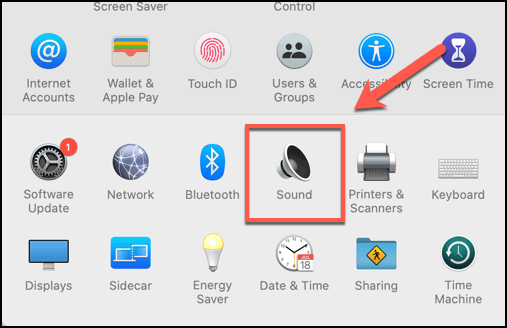

This has an effect upon the sound quality – those formats aren't telling the full story of our favourite songs. The use of lossy compression means data is lost in the encoding process, which in turn means resolution is sacrificed for the sake of convenience and smaller file sizes.
Mac audio input resolution 320kbps#
For example, Spotify (which unlike Amazon Music and Apple Music has notoriously not yet ventured into better quality) uses 320kbps Ogg Vorbis streams. The main claimed benefit of high-resolution audio files is superior sound quality over compressed audio formats such as MP3 and AAC.ĭownloads from sites such as Amazon and iTunes, and streaming services such as Spotify, use compressed file formats with relatively low bitrates. Naim Uniti Atom system What’s so good about hi-res audio? MP3, AAC, WAV, FLAC : all the audio file formats explained.

Used for Tidal Masters hi-res streaming, and product support is picking up pace. MQA (hi-res): A lossless compression format that efficiently packages hi-res files with more emphasis on the time domain. It comes in 2.8MHz, 5.6MHz and 11.2MHz varieties, but isn't as widely supported as some of the formats above. An iTunes- and iOS-friendly alternative to FLAC.ĭSD (hi-res): The single-bit format used for Super Audio CDs. It's royalty-free and widely supported (though not by Apple) and is considered the preferred format for downloading and storing hi-res albums.ĪLAC (hi-res): Apple's own lossless compression format also does hi-res, stores metadata and takes up half the space of WAV. It is lossless and uncompressed (so big file sizes), but not massively popular.įLAC (hi-res): This lossless compression format supports hi-res sample rates, takes up about half the space of WAV, and stores metadata. It has poor metadata support (that is, album artwork, artist and song title information).ĪIFF (hi-res): Apple's alternative to WAV, with better metadata support. Great sound quality but it's uncompressed, meaning huge file sizes (especially for hi-res files). WAV (hi-res): The standard format all CDs are encoded in. Used for iTunes downloads, Apple Music streaming (at 256kbps) and YouTube streaming. Convenient for storing music on smartphones and iPods, but doesn't support hi-res.ĪAC (not hi-res): An alternative to MP3s, it's lossy and compressed but sounds better. MP3 (not hi-res): Popular, lossy compressed format ensures small file size, but far from the best sound quality. Here's a breakdown of all the main file formats: The relative merits of each of the formats can be argued, but the most crucial issue will be the file's compatibility with your chosen products and software. Other formats include the uncompressed WAV and AIFF formats, DSD (the format used for Super Audio CDs), and the more recent MQA (Master Quality Authenticated). They are 'lossless' as opposed to 'lossy'. They include the popular FLAC (Free Lossless Audio Codec) and ALAC (Apple Lossless Audio Codec) formats, both of which are compressed but in a way that means that, in theory, no information is lost. That's not all: there are also several different hi-res audio file formats to choose from, all of which have their own compatibility requirements.

Hi-res audio does come with a downside, though: file size. You can also have 88.2kHz and 176.4kHz files too. Hi-res audio files usually use a sampling frequency of 96kHz or 192kHz at 24bit. The more bits there are, the more accurately the signal can be measured in the first instance, so going from 16-bit to 24-bit can deliver a noticeable leap in quality. Sampling frequency (or sample rate) refers to the number of times samples of the signal are taken per second during the analogue-to-digital conversion process. In its simplest terms, hi-res audio tends to refer to music files that have a higher sampling frequency and/or bit depth than CD, which is specified at 16-bit/44.1kHz. In 2014, the Digital Entertainment Group, Consumer Electronics Association and The Recording Academy, together with record labels, formally defined high-resolution audio as “lossless audio that is capable of reproducing the full range of sound from recordings that have been mastered from better than CD quality music sources". Unlike high-definition video, there’s no single universal standard for hi-res audio. Sony Walkman (Image credit: Sony) What is high-resolution audio?


 0 kommentar(er)
0 kommentar(er)
